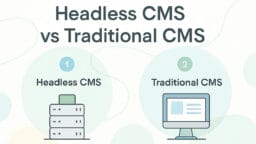It is increasingly the case that business people find themselves overwhelmed by information. In an environment where “big data” is sometimes valued more for its “bigness” than its “data”, it is not surprising professional people actively look for ways to avoid a situation where they have all the data but have no way to utilize it. Here are 10 ways to make sure that doesn’t happen.
1. Learn the Tools
 Every major computer application has a library of associated “tips and tricks” articles to go with it online. Each article might take five to 10 minutes of effort to learn. These are often better than consulting the entire manual because the articles distil comprehensive instructions down to the “five most used features” and then explain how those features can be used in certain contexts.
Every major computer application has a library of associated “tips and tricks” articles to go with it online. Each article might take five to 10 minutes of effort to learn. These are often better than consulting the entire manual because the articles distil comprehensive instructions down to the “five most used features” and then explain how those features can be used in certain contexts.
2. Learn the System
 Your operating system, whether you use a PC or mobile device, is crammed full of features that are designed to help you manipulate files, process new information quickly and store it in a way you can find it easily. Find and learn to use those features and you will be saving yourself huge effort later.
Your operating system, whether you use a PC or mobile device, is crammed full of features that are designed to help you manipulate files, process new information quickly and store it in a way you can find it easily. Find and learn to use those features and you will be saving yourself huge effort later.
3. Diagrams vs. All
 Knowing the difference between a diagram and a chart is the first step towards understanding the difference between data modeling and data interpretation. A diagram shows the relationship between elements. A chart shows the elements themselves in a visual format. Once you are able to see how different parts of a data system interact, it becomes possible to see that data in one or more different “dimensions” which can lead to crucial insights.
Knowing the difference between a diagram and a chart is the first step towards understanding the difference between data modeling and data interpretation. A diagram shows the relationship between elements. A chart shows the elements themselves in a visual format. Once you are able to see how different parts of a data system interact, it becomes possible to see that data in one or more different “dimensions” which can lead to crucial insights.
4. Store Information Properly
 Half the challenge of managing data is being able to find it later. Many people who consider themselves computer experts have no idea how to use a hierarchical file system (which is built into every data processing device on the market today). This is a skill that is relatively easy to learn.
Half the challenge of managing data is being able to find it later. Many people who consider themselves computer experts have no idea how to use a hierarchical file system (which is built into every data processing device on the market today). This is a skill that is relatively easy to learn.
5. Charting
 Rows and columns of numbers are more difficult to understand for some people than visual charts. Most spreadsheet software and some standalone tools can be used to generate charts from raw data. This is a skill that will require a fair amount of experience, but it will pay off.
Rows and columns of numbers are more difficult to understand for some people than visual charts. Most spreadsheet software and some standalone tools can be used to generate charts from raw data. This is a skill that will require a fair amount of experience, but it will pay off.
6. Understanding Charts
 Most people don’t have the statistical training to understand what kind of charts should be used for their data, and as a consequence, don’t know how to read the more obscure chart types. This is important for the simple reason that charting is a key tool. Any basic introduction to statistics should clear up the mystery and may allow for the discovery of a powerful new way to understand your data.
Most people don’t have the statistical training to understand what kind of charts should be used for their data, and as a consequence, don’t know how to read the more obscure chart types. This is important for the simple reason that charting is a key tool. Any basic introduction to statistics should clear up the mystery and may allow for the discovery of a powerful new way to understand your data.
7. Using Reports
 Most database software comes with a basic set of reporting tools. Some of these tools are standalone applications. Reporting tools do for your data’s numbers and categories what charts do for your spreadsheets. A reporting application will allow you to summarize and emphasize raw data in simpler document formats. Reporting is one of the most powerful ways to process your data.
Most database software comes with a basic set of reporting tools. Some of these tools are standalone applications. Reporting tools do for your data’s numbers and categories what charts do for your spreadsheets. A reporting application will allow you to summarize and emphasize raw data in simpler document formats. Reporting is one of the most powerful ways to process your data.
8. Extemporaneous Data Processing
 Certain operating systems and tools will allow you to “roll your own” method of analyzing, summarizing and emphasizing your data. Scripting languages like Bash and operating systems like Linux offer generalized programming environments that can be used to perform powerful data operations most reporting and charting tools can’t match.
Certain operating systems and tools will allow you to “roll your own” method of analyzing, summarizing and emphasizing your data. Scripting languages like Bash and operating systems like Linux offer generalized programming environments that can be used to perform powerful data operations most reporting and charting tools can’t match.
9. Buzzword Awareness
 The basics of data storage and processing haven’t changed for many decades. The labels and buzzwords used to describe them, however, seem to change regularly. Don’t fill your work day with details about the latest “solution” to everyone’s problems. Know what it is, to be sure, but resist the temptation to overturn what you already know is working in exchange for something that might be the same set of tools in a different color box.
The basics of data storage and processing haven’t changed for many decades. The labels and buzzwords used to describe them, however, seem to change regularly. Don’t fill your work day with details about the latest “solution” to everyone’s problems. Know what it is, to be sure, but resist the temptation to overturn what you already know is working in exchange for something that might be the same set of tools in a different color box.
10. Depth over Speed
 You will be constantly reminded everything is moving very fast. But you shouldn’t be, because if you are moving too fast, you’ll miss the details you should be looking for in your analysis. Slow down and look for the depth in your information and you will be able to fully utilize the tools you are depending on.
You will be constantly reminded everything is moving very fast. But you shouldn’t be, because if you are moving too fast, you’ll miss the details you should be looking for in your analysis. Slow down and look for the depth in your information and you will be able to fully utilize the tools you are depending on.
Conclusion:
 Among all these suggestions, the knowledge of what data relationships entail and how they can be used is likely the most vital. From that basis, the rest of your big data strategy will become easier and more productive. Like most things, it is a process, but with the right knowledge and action, it will be a successful one.
Among all these suggestions, the knowledge of what data relationships entail and how they can be used is likely the most vital. From that basis, the rest of your big data strategy will become easier and more productive. Like most things, it is a process, but with the right knowledge and action, it will be a successful one.
This article is written by Finnegan Pierson. He is a freelance technology writer with a focus in big data, data visualization, & cloud computing. He covers the latest industry news, trends, and solutions.






